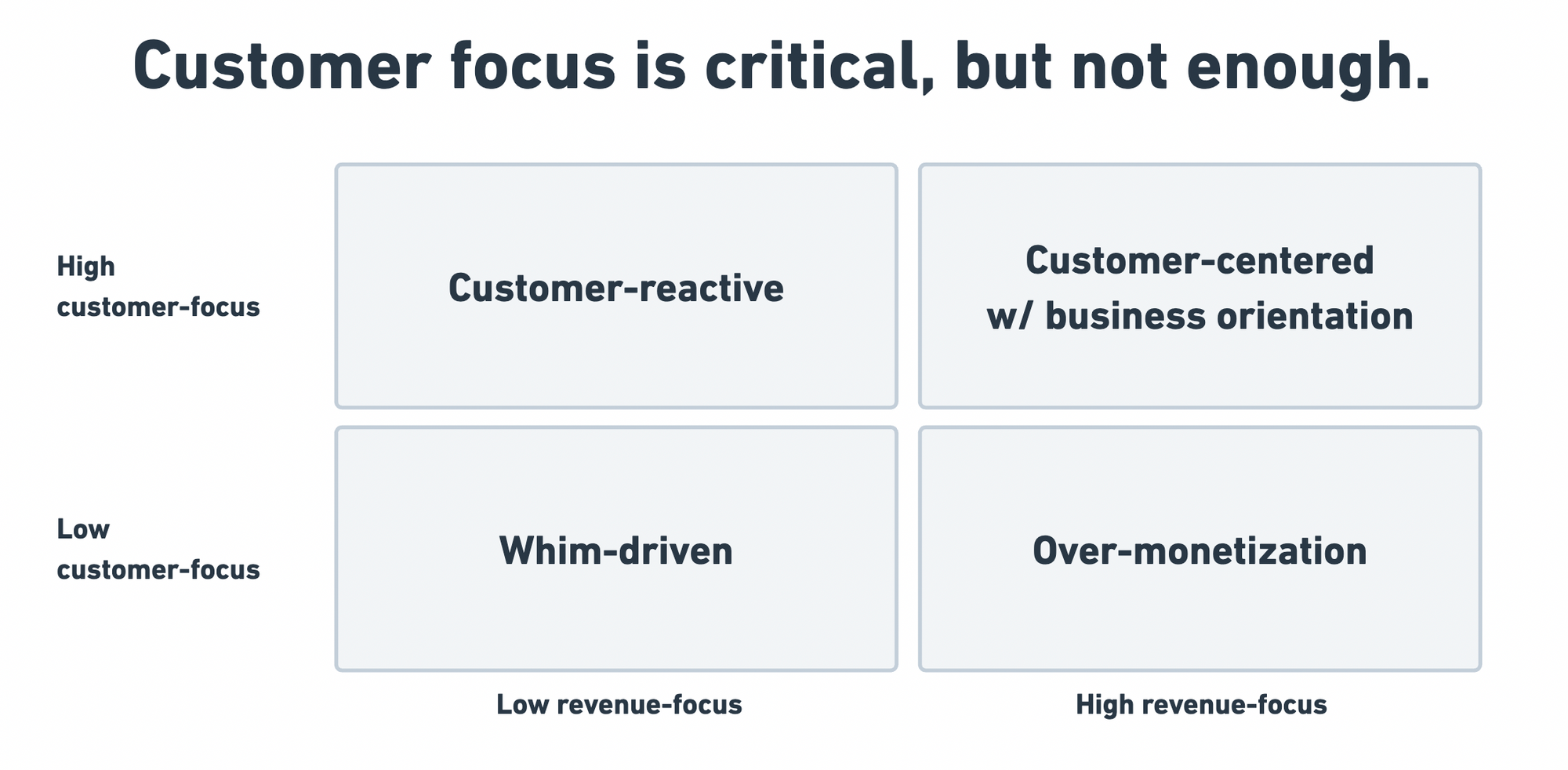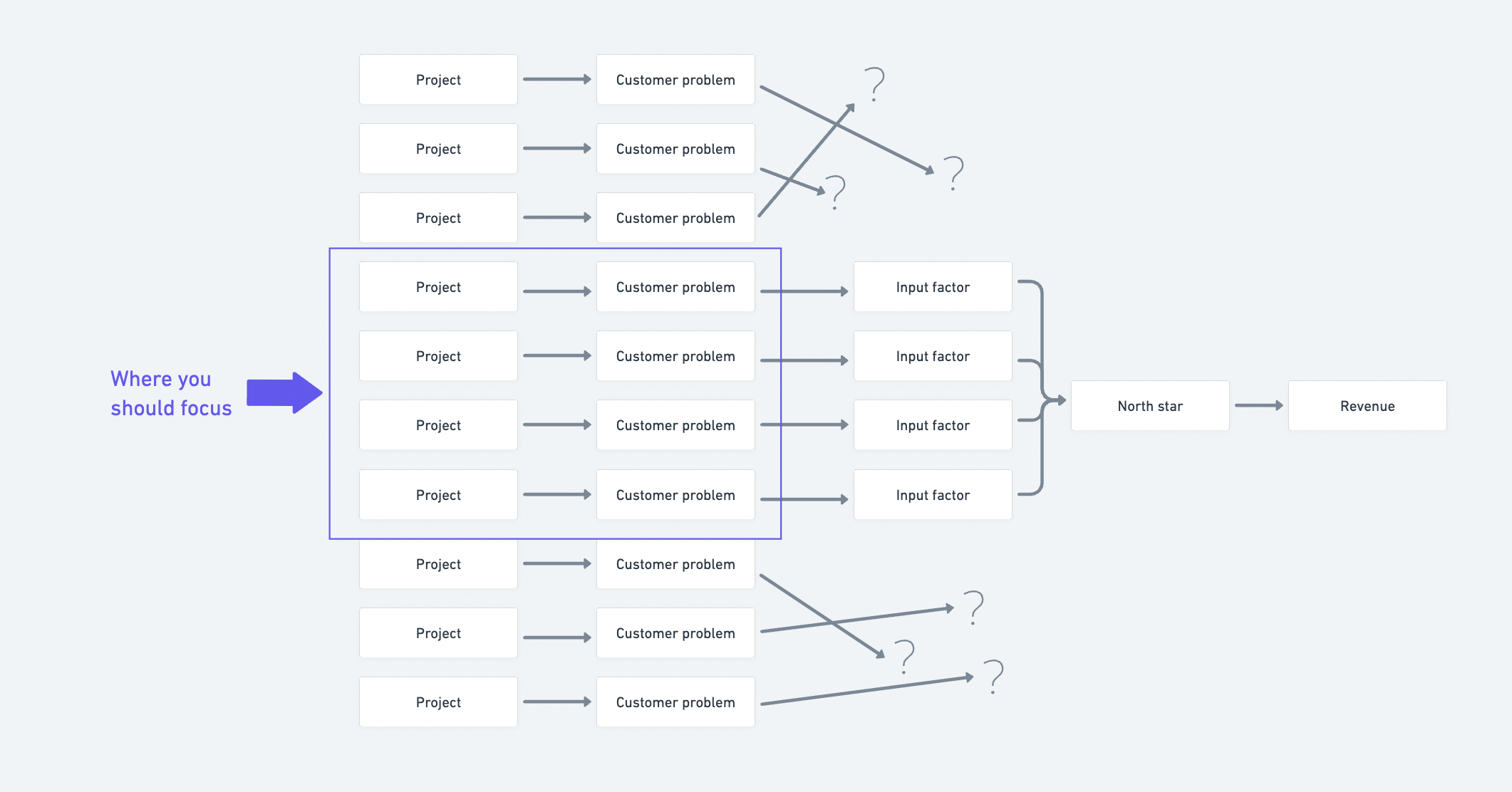Customer focus isn't enough.

It's true that most companies need to increase their customer focus. However, a lot of business advice neglects to mention that customer focus is not enough. To thrive long-term, companies must be customer-focused and business-oriented at the same time. It might seem that these two ways of operating are in tension with each other. They are not.
I made this 2x2 to explain:

Let's walk through each quadrant.
- Whim-driven (low customer-focus, low revenue-focus) teams build stuff according to their own intuitions, without feedback loops from customers or the market. This doesn't work unless you get crazy lucky. And when you do get lucky like this, it sucks for everyone at the company because the founders develop delusions of grandeur.
- Over-monetizing (low customer-focus, high revenue-focus) teams squeeze every ounce of profit from their current user base to the detriment of the user experience. Imagine a website overrun by ads. Users will eventually abandon ship due to the poor experience.
- Customer-reactive (high customer-focus, low revenue-focus) teams listen to customers and scramble to solve their problems, but they lack principles for deciding which problems to solve. Consequently, they fail to advance a long-term product vision or business goals.
- Customer-centered & business oriented (high customer-focus, high revenue-focus) teams focus on solving the right customer problems that unlock long-term business value. When UX and revenue are in tension, they carefully manage the balance. A shining example is Google in the 1990s when they resisted over-monetizing the massive traffic to their search page. See my post Balancing Short-Term and Long-Term Product Bets for a deep dive into Google's approach.
An important concept is that you could be solving the wrong customer problems. On the surface this might seem counter intuitive. Why would it ever be bad to solve a customer problem? This diagram illustrates.

The customer problems in the highlighted area connect to inputs tied to a North Star and long-term revenue goals. The other customer problems, while legitimate problems for real people, don't tie into the strategy.
For an example, in the classic era of Netflix when they were a DVD business, you can imagine hundreds of potential customer problems to solve. But they focused on the highest-leverage problem: customers weren't adding enough DVDs to their queue, which hurt retention, which slowed revenue growth. Getting customers to add more DVDs to the queue was the right problem to solve, and solving that problem was lucrative from a customer and revenue perspective.

Here are some examples of customer problems that you should probably not prioritize:
- The problem, while prevalent, is experienced by users who are not in the ideal customer profile (ICP).
- The problem, while maybe an annoyance, doesn't prevent the user from getting value from your product or sticking with your product. (The earlier stage you are, the more you should avoid focusing on these types of problems).
- The problem, while important to the ICP, is outside the agreed upon focus of the product strategy.
- The problem isn't serious enough to justify the effort spent to fix it.
- The problem only applies to a small percentage of companies in the ICP.
To sum things up, customer focus is critical. But blind customer focus will lead to waste, distractions, and poor long-term business results.
Thanks for reading this article! At DoubleLoop, we specialize in helping companies map their strategies so they can focus on the right customer problems that lead to long-term business results. If you'd like to signup for a free individualized workshop, sign up here.